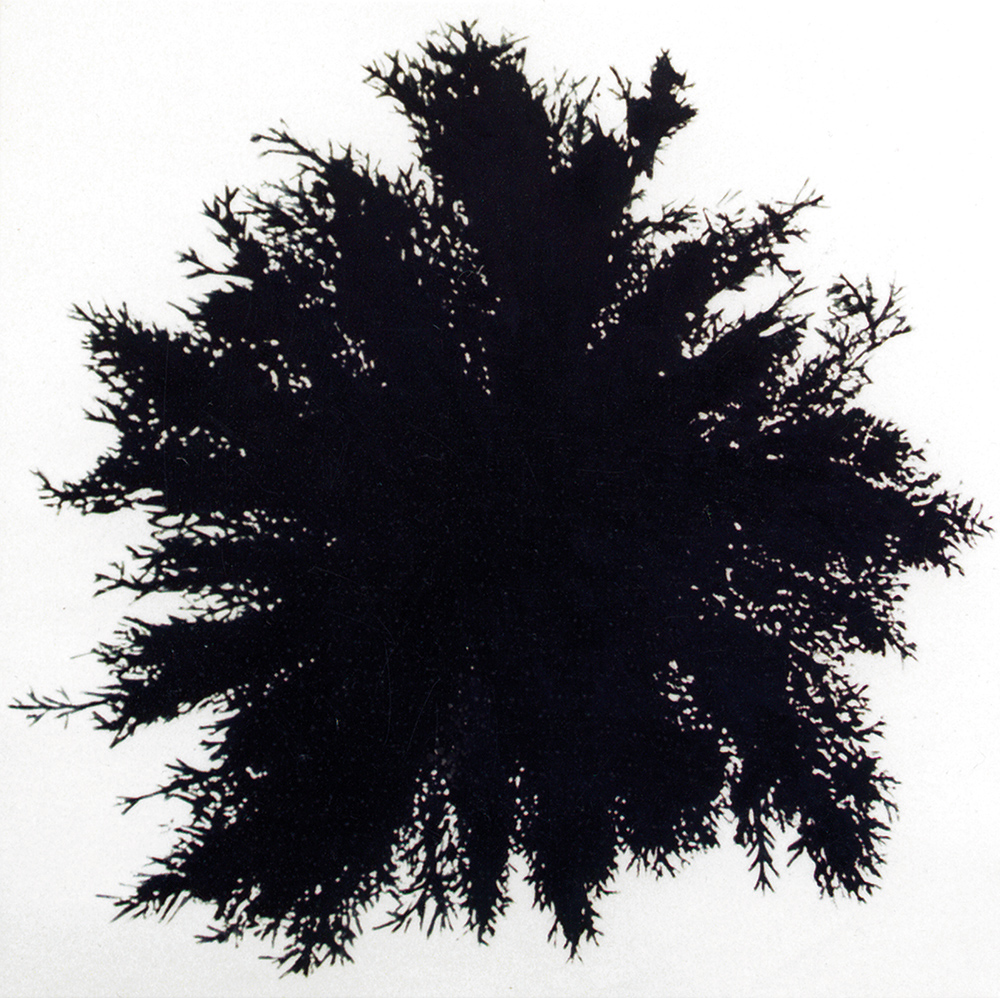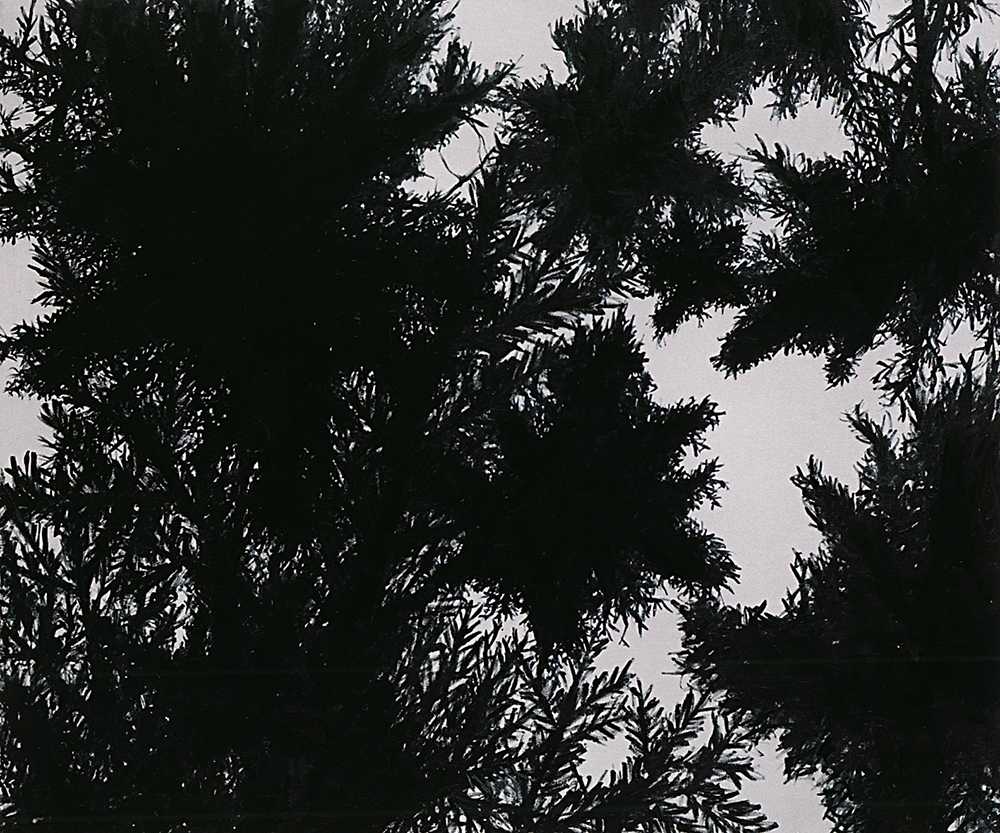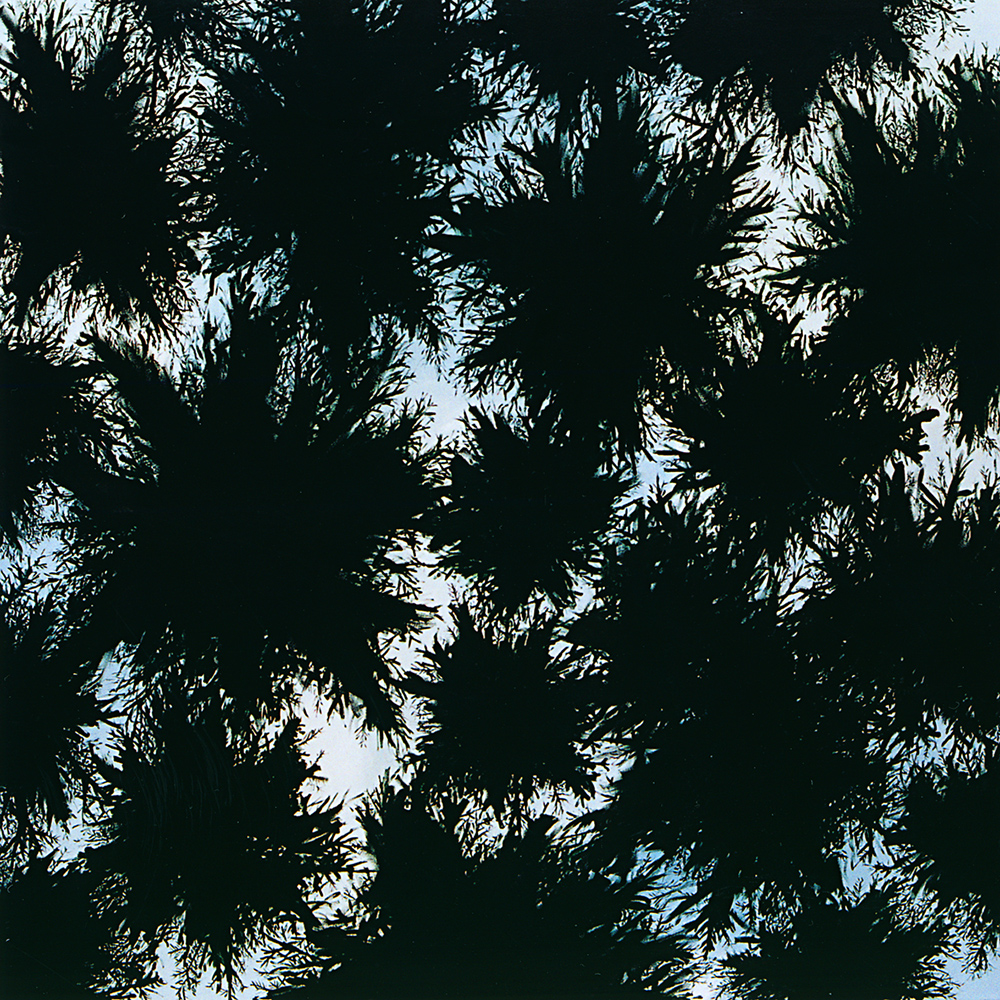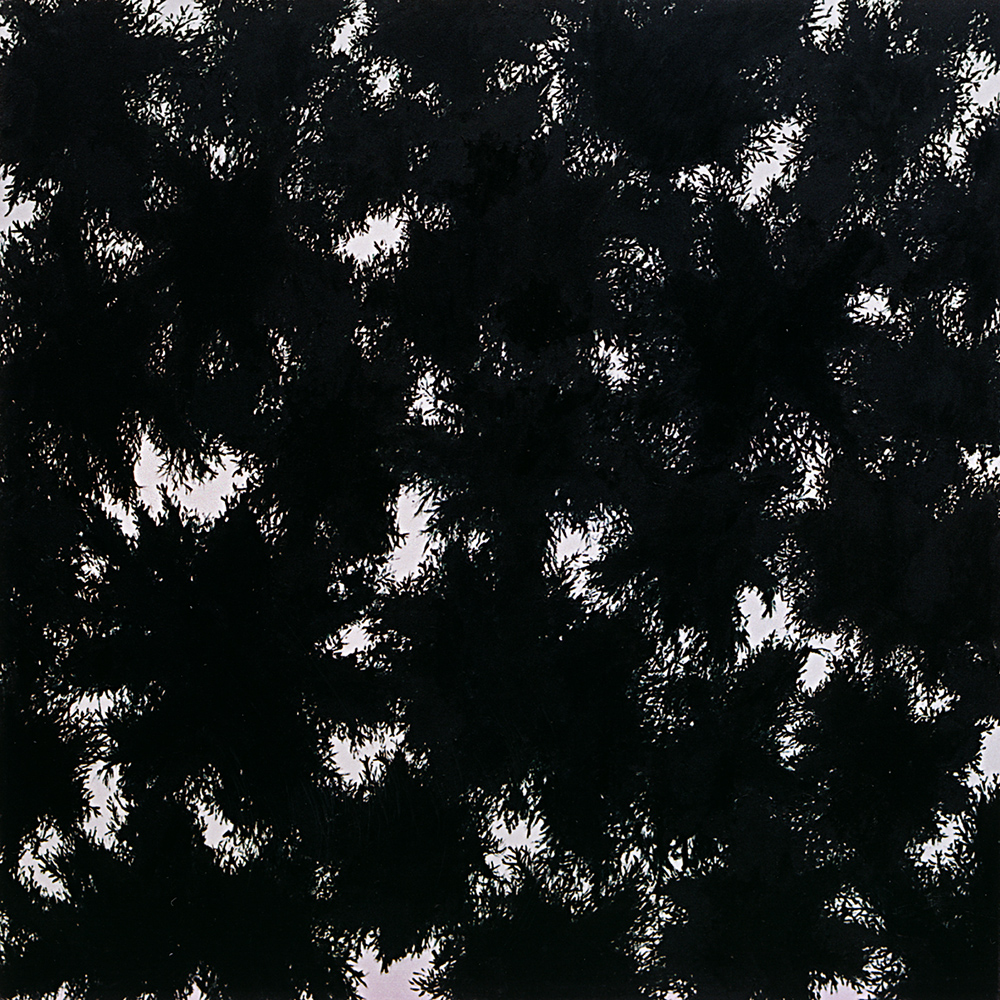|
Baum (tree), 2004, oil and acryl on canvas, 120 x 120 cm
Wald III (forest III), 2004, oil and acryl on canvas, 130 x 110 cm
Wald V (forest V), 2004, oil and acryl on canvas, 180 x 180 cm
Wald VI (forest VI), 2004, oil and acryl on canvas, 120 x 120 cm |
Views from belowA treetop as ghostly silhouette from below, behind it the blue of the sky and fragments of white passing clouds. What every hiker instinctively knows-the image of tree and sky-reveals itself at a second glance as a utopian point of view. Every forest image depicting romantic glades, menacing thickets or even alarming clear-cutting, is sought after here in vain. Tobias Becker's series, "Wald I-VI" avoids the standard representation by means of a radical change in perspective. The treetop appears as if detached from its trunk, floating before and over the viewer, no longer belonging to the earth. The attempt to transform trees, similar to clouds, into emblems of transcendence is extraordinary. The first effective photorealistic painting proved to be upon closer look nothing but oil paint crudely applied to canvas. Likewise these forest images lie between the poles of illusion and delusion, between mimesis and abstraction, and evade a specific definition. Becker's playful ambivalence with perspective and space proves to be
tangible utopia. Tangible utopia's are actual places that essentially
present unreal spaces. These spaces break with conventional time. The
circumscribed area depicted in the forest out-takes, where space and
time become reconstructed and fictionally compressed, is a symbolic
utopian space, each image itself a microcosmic landscape. A function of
these so called "heterotopias" is to create another space, that is
subjected to another order. This other space constitutes an antithesis
to the "real" unordered world. Heterotopias disturb, then they
disengage from the known and create the basis for a modified
perception. Thus Becker's images also possess something confusingly
mysterious. The forest becomes a non-place of the un-contextualized,
that works on the viewer anonymously and manipulatively. The images act
out against a demagogy of perception, that was last but not least a
central theme in (German) representations of the forest. In them
landscapes were constructed that were connected to a distinct feeling
of home. The images of floating trees tops, that distort the
orientation of the viewer, reflect the forest as a lonely place,
transforming it into a center of an "inverted world" and attempt to
return to the images of the forest a freedom that allows for different
perceptions.
|



